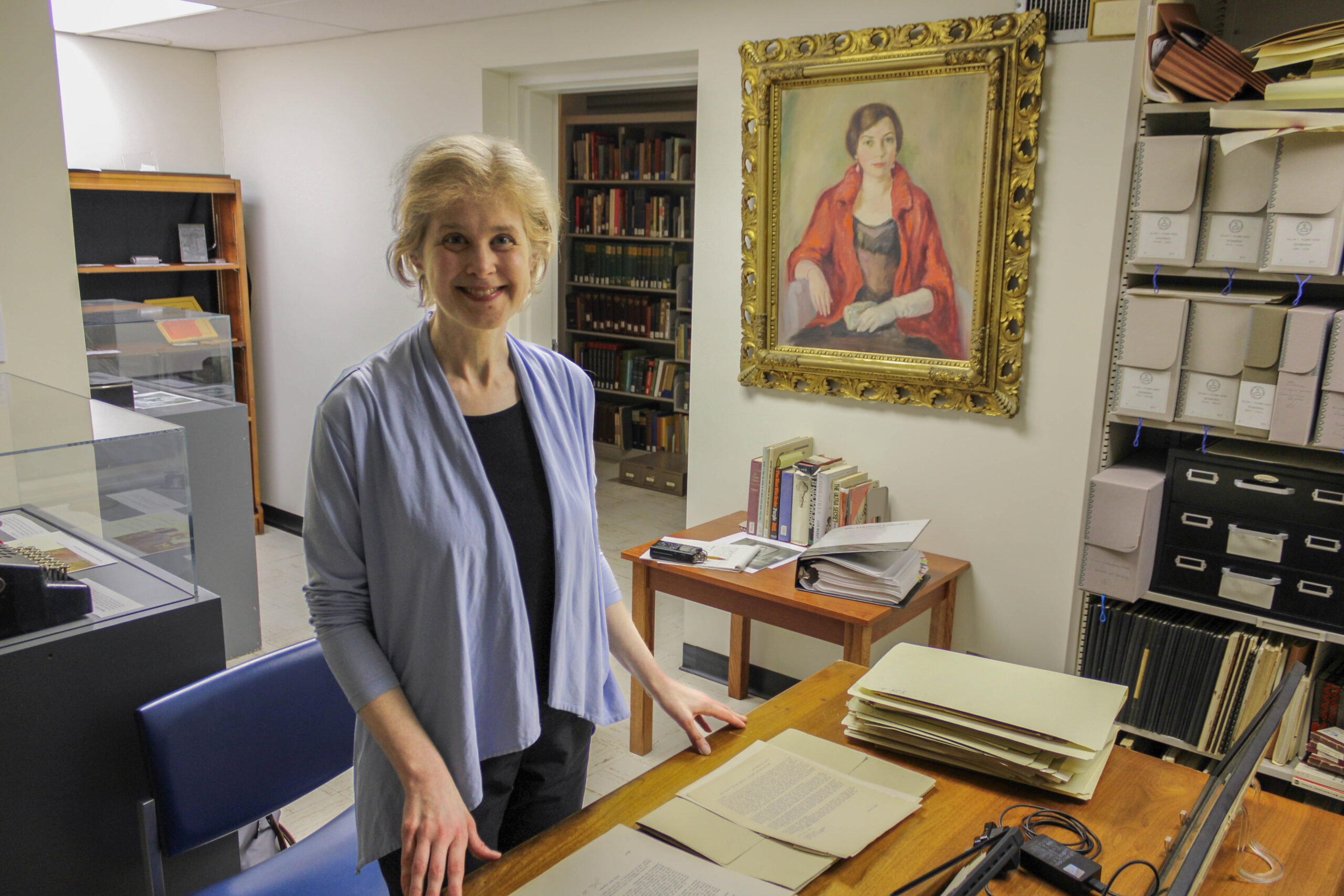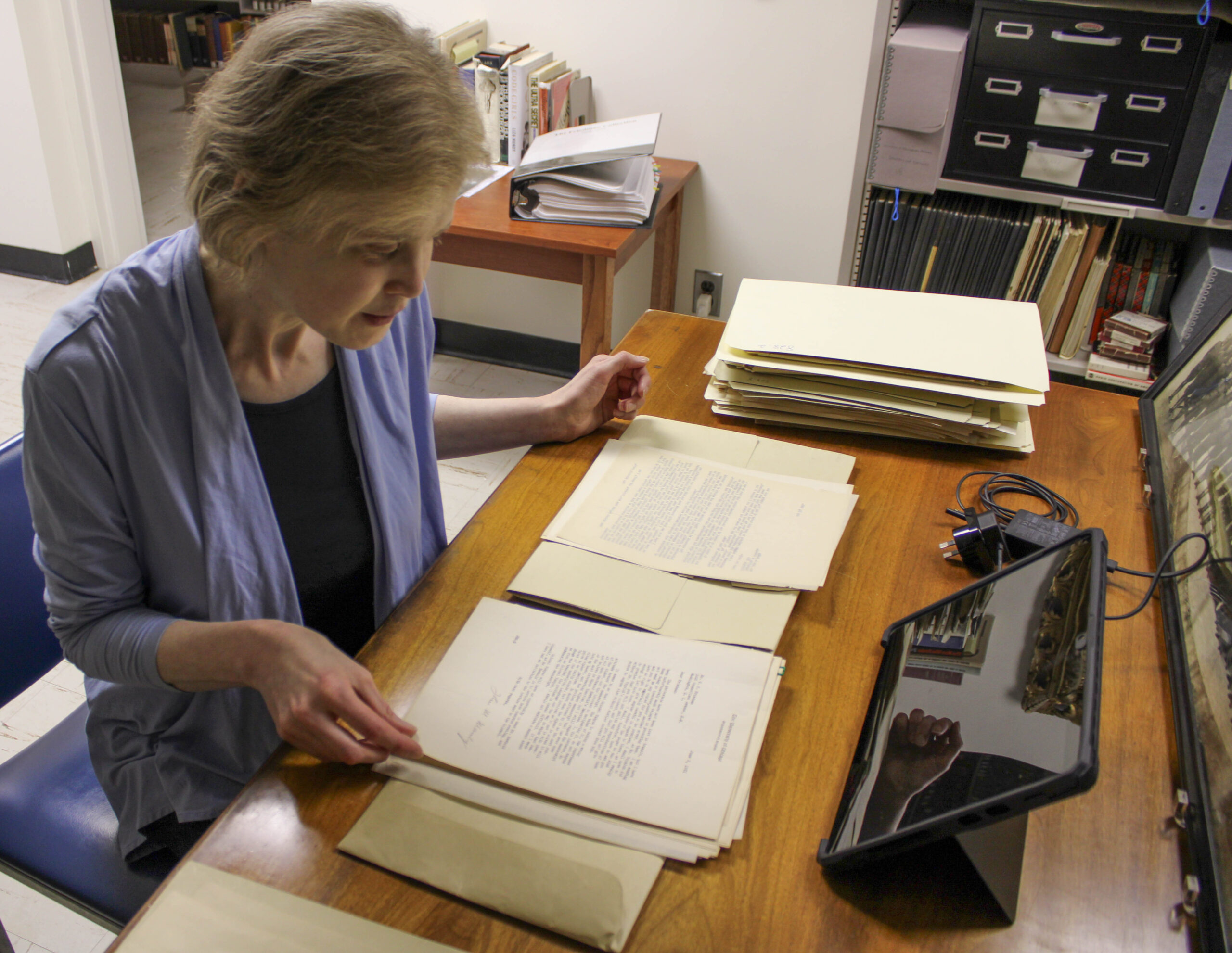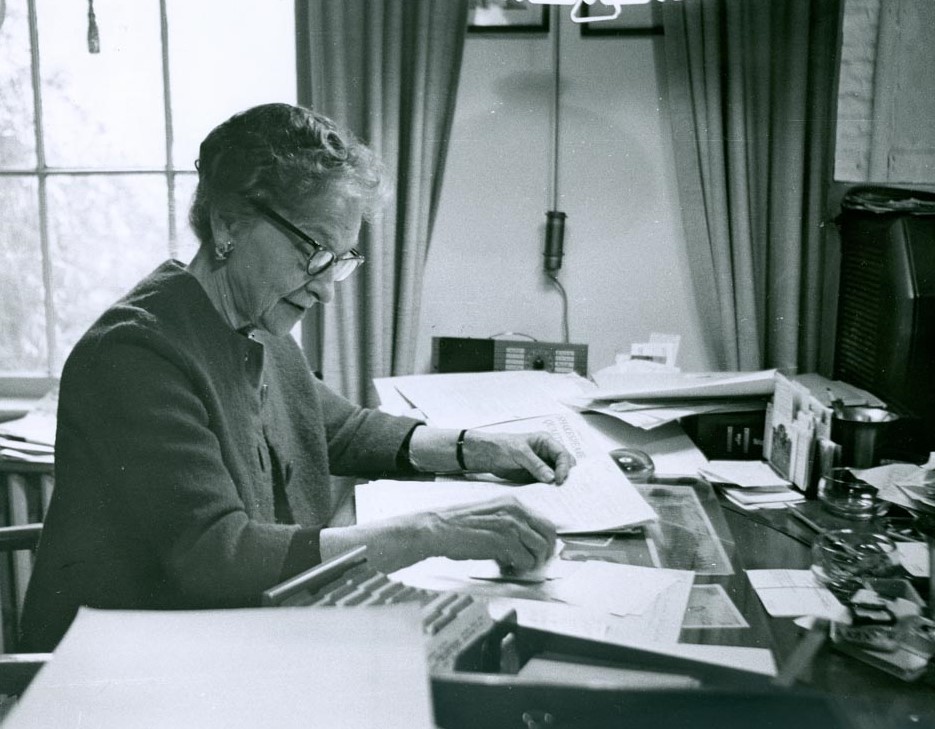Five-Star Spotlight is an ongoing interview series with the researchers, supporters, interns, volunteers, and leaders who make the George C. Marshall Foundation possible.
In this installment, Director of Communications and Multimedia Glen J. Carpenter sits down with with writer Amy Butler Greenfield, author of The Woman All Spies Fear: Code Breaker Elizebeth Smith Friedman and Her Hidden Life, to discuss her work with the Elizebeth Smith Friedman collection at the Marshall Foundation archive in Lexington, Virginia.
Glen: Thank you for agreeing to speak with me today. Could you please give our readers a little background on yourself and your work?
Amy: History is my passion, and I especially love writing about the history of science. Thinking about global perspectives and writing about code breaking has been where all of that has come together for me. And being able to write about people—not just the details of exactly how a code is broken, but who are the people behind it? Who are the people doing the work? What do they live through as they do it? What are the pressures on them, and the pressures of secrecy? What is it like to live with enormous secrets in your marriage, with your friends? Those kinds of questions just preoccupy me. It’s almost like being able to write a thriller. When you’re writing about code breakers, nonfiction becomes very exciting.
Glen: How did you become interested in Elizebeth Smith Friedman?
Amy: I had known about Elizebeth Smith Friedman for a while because of my interest in code breaking. I had done a little research to know a bit more about women code breakers, and I had seen that there were papers, but it was on the back burner because I had a lot of other projects.
I was a young mother at the time. When my daughter was about eight years old, we took her to see Bletchley Park; we live in England, it’s less than an hour away. She was very impressed and wanted to play codebreaking games. We saw another exhibit soon after that, elsewhere in England, and after we saw that, my daughter turned to me and looked up and said, “were there any girl code breakers?” I thought “Oh, my goodness” and said yes. I told her a bit about some, but I thought we need to get this out there so that it’s not a question anymore, so that we know these women who did this kind of work. That’s what made me go back, think again about writing about Elizebeth Friedman, and then just clear the time and space to do it.
Glen: Were you at all surprised to find out that her papers were held here in rural Virginia, at the George C. Marshall Foundation?
Amy: I was surprised. I didn’t know exactly where Lexington, Virginia, was when I was first looking on the internet. And I have to say, because so many of the major archives are located around D.C., I had to go look at a map and see, oh no, this is a good distance away.
I actually grew up in a rural, mountainous area myself, so three cheers for it being here. But I realized I was just going to have to think hard about when and where I could fit in an archives trip because it was very clear that that’s what I needed to do. It’s really engaging with those papers yourself. Even if you see the transcripts by others of certain bits where you can see research they’ve done, there is nothing like sitting down with all the original material and reading through it and coming to your own conclusions.
Glen: As a researcher, what has your experience with the George C. Marshall Foundation archives been like?
Amy: I cannot say enough good things. When I first came here all the way from England to look at the Friedman papers, the library was in a time of transition and they were searching for a new director. Paul Barron, an outgoing library director who returned to oversee things, kept the archives open late for me. They made sure I could get in early because they knew I was coming from so far away, made everything available, found me a quiet place to work. They had to come in and tap me on the shoulder because I was so deeply immersed in the material there—that’s the other side of it.
Not only are the people wonderful here. Melissa Davis, who’s now the person in charge of the library and archives, is just a dream to work with. But the material is so wonderful, I truly get lost in time when I’m working here. The resources are fabulous.
I sing your praises to everyone. So many people within the field of codebreaking, like people who work at the National Cryptologic Museum in Maryland, generally know about this resource, but people that are just that extra step further out, who maybe work in World War II or women in history—this just isn’t on their map. And even archivists that I know sometimes don’t know where it is, so I’ am always very quick to tell them how wonderful it is to work here.
Glen: Why is Elizebeth Smith Friedman important today?
Amy: I think Elizebeth is important just in her own right. If you look at the history of the early 20th century, World War I, World War II, the interwar period, and particularly looking at prohibition, gangsters, smugglers—she was a part of all that history. It was obscured. Often codebreaking lives are obscured because they have to keep their work secret. In Elizebeth Friedman’s case, others took credit for the work, primarily the FBI. It is quite breathtaking that one woman would have been part of that.
I also think that it’s important for understanding the lives of professional women early in the 20th century. We tend to think of women having what we think of as modern, professional lives, as something of a postwar phenomenon, or even later than that, the 1970s. But here’s a woman who’s doing that from the 1910s. Both she and her husband were born in Victorian times, and yet they had what we would recognize as a very modern marriage. That is part of the importance of Elizebeth Friedman’s life as well.
Glen: Finally, out of curiosity, what are some of the more interesting items that you found during your research here in our collections?
Amy: It’s hard to pick because there are so many wonderful things. I think the point at which I completely fell hook, line and sinker for this whole project and working with the Friedman collection was one of the first things I looked at, the love letters that William Friedman wrote to Elizebeth during World War I. They were so immediate, and gave such a sense of personality. He also quotes her letters—we don’t have all of her letters to him, which is a shame, but he was in France traveling back and forth, and at some point I suspect they got lost or they may have been destroyed. But those took me back nearly a century.
There are also collections of funny little letters that they wrote to each other. They’re so extremely candid on the page. In their professional documents, they are extremely careful. They had to be careful what they said. The work itself demands you be meticulous, but in writing each other, they really come alive. You can get a sense of the force of their personalities, their tremendous love for each other, the humor and the courage and the vitality of their lives together.
Glen began working at the George C. Marshall Foundation in 2018 with a background in American studies and video production. He lives in Roanoke, Virginia.



